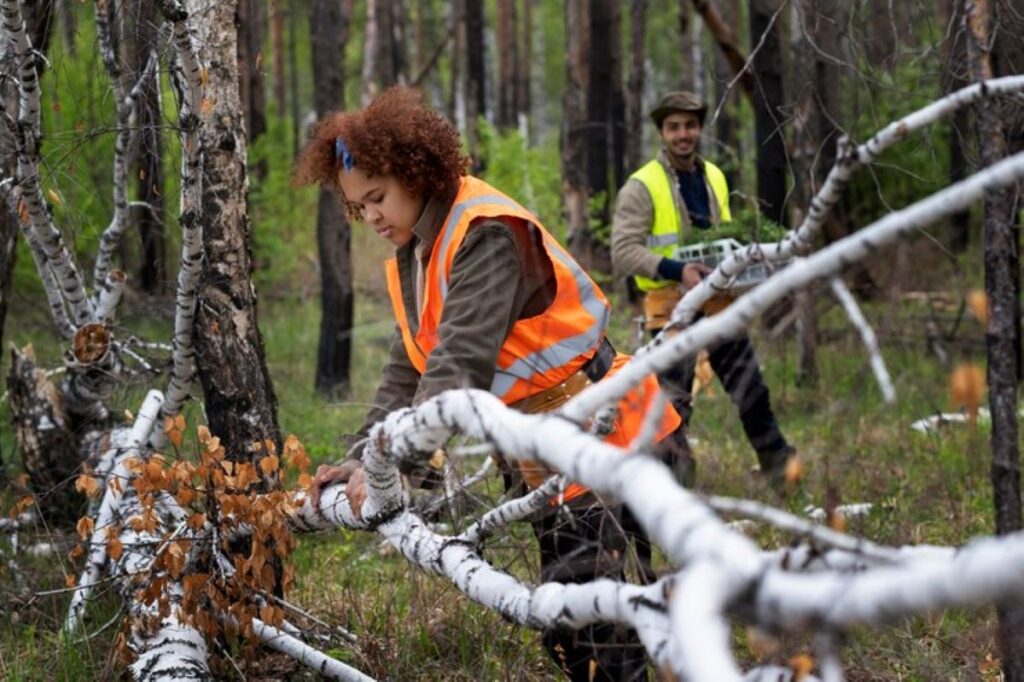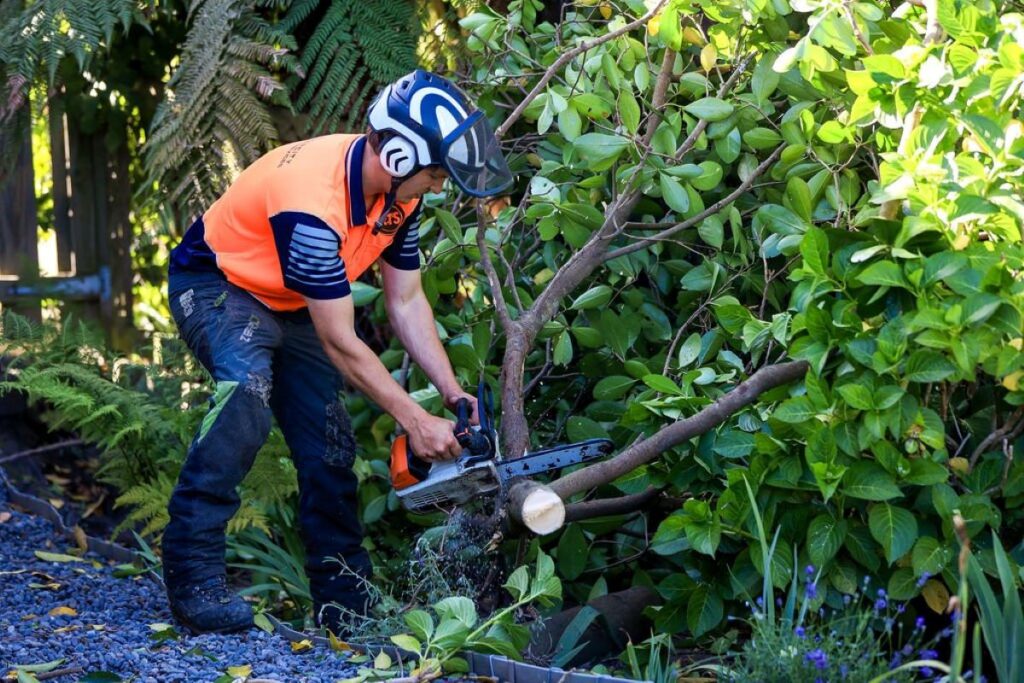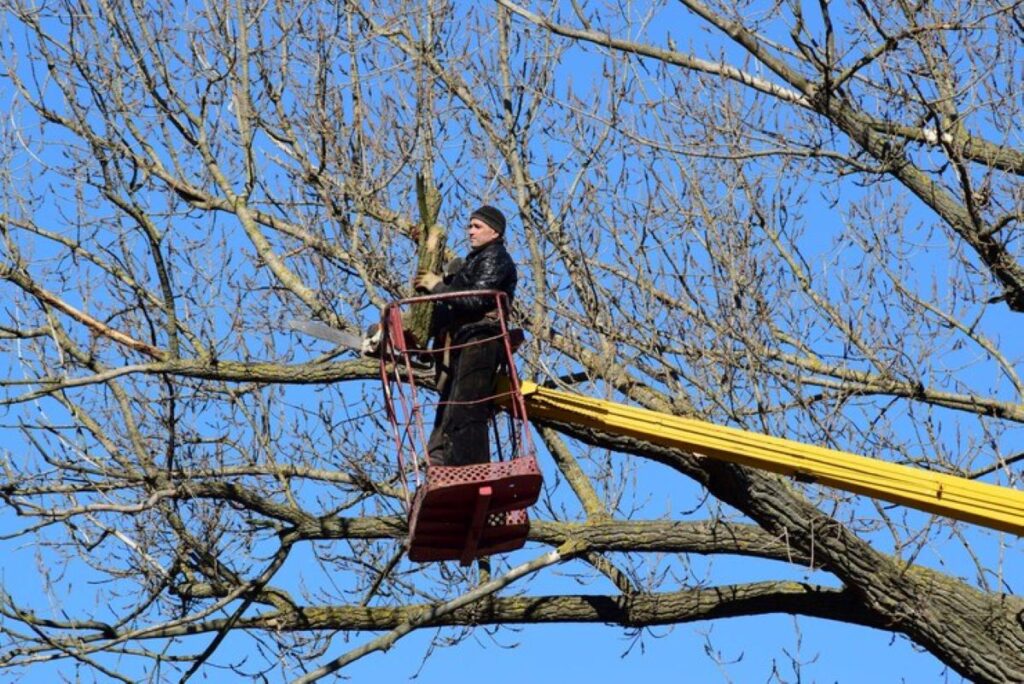Understanding the True Tree Removal Cost Sydney Homeowners Face
Why Tree Removal is Essential for Sydney Homeowners
Tree removal becomes essential when trees pose direct threats to property or personal safety. Sydney homeowners face situations where diseased trees, structural weaknesses, or dangerous leans create immediate hazards that cannot be ignored.
The first step in understanding the cost of tree removal in Sydney is to recognize why this service is so important. Here are some reasons why tree removal may be necessary:
- Compromised Structural Integrity: Trees growing dangerously close to home foundations can weaken the structure over time.
- Threats to Property: Large dead branches hanging overhead pose a risk to roofs, vehicles, and family members below.
- Hazardous Storm-Damaged Trees: Trees that have been damaged by storms with split trunks or exposed root systems become potential dangers during strong winds.
- Driveway and Pathway Issues: Trees lifting driveways or cracking pathways force homeowners to make difficult decisions.
- Expensive Problems with Utilities: Root systems invading underground utilities or sewer lines can lead to costly issues that worsen if not addressed promptly.
- Blocked Sunlight and Power Line Interference: Some trees simply outgrow their spaces, blocking sunlight from gardens or interfering with power lines.
The Costs of Tree Removal for Sydney Homeowners
The cost of tree removal for homeowners in Sydney can vary significantly depending on several factors. Here are some key variables that influence the pricing:
- Size of the Tree: Smaller trees generally cost less to remove compared to larger ones.
- Health of the Tree: Diseased or dying trees may require special handling, which can increase costs.
- Location of the Tree: Trees located in hard-to-reach areas or near structures may require additional equipment or precautions, resulting in higher expenses.
- Accessibility: If the tree is difficult to access due to surrounding obstacles, it may require more time and effort to remove.
On average, a small ornamental tree might cost between $300 and $800 for removal, while a towering eucalyptus could demand $10,000 or more. It’s important for homeowners to understand these potential costs when considering tree removal services.
The Impact of Sydney’s Urban Environment on Pricing
Sydney’s unique urban environment also plays a role in determining tree removal costs. According to national figures, premium rates in Sydney are approximately 9% higher than average. This is primarily due to:
- The city’s challenging urban landscape
- Strict safety standards imposed by local authorities
Homeowners should be aware that these factors can contribute to higher prices compared to other regions in Australia.
What Factors Do They Need to Consider When Estimating Tree Removal Costs in Sydney?
Three primary elements shape the final bill: the tree’s dimensions, where it stands, and its current health status. Each factor affects the complexity of the job and the resources required to complete it safely.
Tree Size and Height: How Do They Impact Equipment and Labor Needs?
Height dictates everything from crew size to machinery selection. A 5-meter tree might need two workers with basic chainsaws and hand tools, while a 25-meter giant demands specialized climbing gear, bucket trucks, or cranes. Taller specimens require piece-by-piece dismantling rather than simple felling, with arborists carefully lowering each section using ropes and rigging systems. The trunk diameter matters equally—thicker trees mean more cutting time, heavier wood to manage, and additional trips to dispose of the material.
Location Accessibility: Why Does It Play a Crucial Role in Determining the Overall Cost?
A tree standing in an open backyard with direct vehicle access costs significantly less than one wedged between a house and fence line. Restricted access forces crews to carry equipment manually, use smaller machinery, or employ rope-based lowering techniques that triple the labor hours. Trees overhanging pools, power lines, or neighbouring properties demand precision work with no room for error. Urban Sydney properties often present tight spaces where standard wood chippers can’t reach, requiring manual hauling of debris to the street—a time-intensive process that inflates the quote.
Tree Health: In What Ways Does the Condition of the Tree Require Specialized Techniques and Increase Expenses?
Diseased or storm-damaged trees behave unpredictably during removal. Dead wood becomes brittle and prone to sudden breakage, while rotted trunks may collapse without warning. Arborists must assess structural integrity before climbing, sometimes requiring aerial inspections or ground-penetrating radar for root analysis. Trees with compromised stability need extra rigging points, slower cutting speeds, and additional safety personnel on standby. Pest-infested specimens may require fumigation protocols before disposal, adding both time and specialized treatment costs to the project.
Furthermore, understanding specific guidelines related to tree management can provide valuable insights into best practices for tree removal in urban settings like Sydney.
How Much Should They Expect to Pay for Removing Trees of Different Sizes in Sydney?
Tree removal pricing in Sydney follows a tiered structure based primarily on size. Small tree removal cost typically ranges from $300 to $800 for specimens under 5 meters tall, while medium tree removal price sits between $800 and $2,500 for trees measuring 5 to 15 meters.
Large tree removal cost Sydney homeowners face jumps significantly to $2,500–$5,000 for trees between 15 and 25 meters. Extra-large specimens exceeding 25 meters command premium rates above $5,000, often reaching $10,000 or more depending on complexity.
The dramatic price escalation reflects exponential resource demands. A 30-meter eucalyptus requires industrial-grade equipment—cranes, elevated work platforms, and specialized rigging systems—that smaller jobs never need. Labor teams expand from two workers for small removals to five or more professionals for towering specimens.
Larger trees generate substantially more waste material requiring disposal. A single mature tree can produce multiple truckloads of timber and branches, adding transport and dumping fees. The time investment multiplies too: small trees take 2-4 hours to remove, while large specimens may require full-day operations or multiple visits.
Risk management intensifies with height. Arborists must carefully section massive trunks to prevent property damage, executing precision cuts while suspended at dangerous elevations. This meticulous approach demands both expertise and time, directly impacting the final invoice.
However, it’s important to note that not all tree removals result in waste. Some materials can be repurposed beneficially. For instance, wood chips from removed trees can be used as mulch in gardens or even transformed into biochar, a substance that not only enriches soil but also plays a role in preventing wildfires when used correctly.
Why Is It Important to Consider Seasonal Variations When Planning Tree Removals in Sydney?
Seasonal tree removal costs fluctuate significantly based on when homeowners schedule the work. Trees with full foliage cost approximately 25% more to remove compared to their bare winter counterparts, primarily due to the additional weight arborists must manage during the cutting and lowering process.
Challenges of Spring and Summer Removals
Spring and summer removals present unique challenges. The extra weight from leaves, sap, and active growth makes trees heavier and more cumbersome to dismantle safely. Arborists need additional time to carefully section branches, which translates directly into higher labor charges.
Advantages of Autumn Removals
Autumn offers a strategic window for Understanding the True Tree Removal Cost Sydney Homeowners Face. As deciduous trees shed their leaves, the reduced weight simplifies the removal process:
- Lighter branches require less rigging equipment
- Faster cutting and lowering procedures
- Reduced physical strain on work crews
- Lower risk of property damage from heavy limbs

Benefits of Winter Removals
Winter removals typically deliver the best value. Bare branches provide clearer visibility of the tree’s structure, allowing arborists to plan more efficient cutting sequences. The dormant season also means softer ground conditions haven’t yet been compromised by summer heat, making access easier for heavy equipment.
Sydney’s mild climate means year-round removal is possible, yet strategic timing can reduce expenses by 20-25% while maintaining safety standards. Therefore, it’s crucial to understand when is the best time of the year to remove trees in order to optimize costs and ensure safety during the process.
What Additional Services Should They Include in Their Budget for a Comprehensive Tree Removal Project in Sydney?
Tree removal usually involves more than just cutting down the trunk. Homeowners in Sydney should also consider the costs of removing the stump, which can range from $100 to $500, as well as the cost of grinding the stump, typically between $150 and $400 depending on its size and complexity.
In addition to these services, there are several other tasks that need to be done properly to complete the job:
- Clearing and disposing of debris: This includes getting rid of branches, leaves, and wood pieces, which can add an extra $200 to $600 to the total cost.
- Trimming branches: If surrounding trees need to be trimmed for safety or aesthetic reasons, this will cost between $150 and $350 per tree.
- Removing roots: Problematic roots near foundations or driveways may require extraction at a cost of $300 to $800.
- Cleaning up the site: Professional raking, sweeping, and lawn repair can add another $100 to $300.
Bundling these services with the initial tree removal can lead to significant savings. Most arborists offer package deals that reduce individual service costs by 15% to 30% compared to booking them separately. For example, a homeowner who pays $2,000 for tree removal plus $400 for stump grinding and $300 for debris removal separately might be able to get all three services for $2,400 as a bundle—saving $300.
Convenience is also a key factor. When multiple contractors have to visit at different times, it wastes time and creates scheduling problems. However, with a single comprehensive service, everything can be handled in one appointment. This minimizes disruption to daily routines and ensures consistent quality throughout the entire project.
Are There Any Local Council Permits That Homeowners Need to Obtain Before Proceeding With Tree Removals in Sydney? How Do These Permits Impact Costs?
Council permits for tree removal Sydney regulations require homeowners to obtain approval before removing most trees on private property. Sydney councils protect significant trees through local environmental plans and development control plans, making unauthorized removal illegal and subject to substantial penalties. For instance, unauthorized tree works on public and private land can lead to severe repercussions.
The permit application process involves submitting details about the tree’s species, size, health condition, and reasons for removal. Arborists typically prepare these applications, including supporting documentation such as tree health assessments or structural engineering reports when trees pose risks to buildings.
Permit Fees
Permit fees fluctuate based on several variables:
- Tree size: Smaller trees under 5 meters may cost $50-$150, while larger specimens can reach $300-$500
- Tree type: Protected native species or heritage-listed trees require more extensive assessments
- Location: Trees in conservation zones or near waterways face stricter scrutiny
- Application complexity: Multiple trees or urgent removal requests increase administrative costs
Processing Times
Processing times range from 2-8 weeks depending on the council and application complexity. Some councils offer expedited processing for dangerous trees, though this comes with premium fees.
Consequences of Non-Compliance
Non-compliance carries serious consequences. Councils can issue fines exceeding $10,000 for unauthorized tree removal, plus orders requiring replacement plantings at the homeowner’s expense. These penalties far exceed permit costs, making compliance the financially prudent choice. Read more about safe tree working.
How Do Safety Measures Influence Pricing When It Comes to Complex Tree Removal Jobs in Sydney?
Safety equipment cost tree removal significantly when dealing with challenging scenarios. Complex removals near power lines, structures, or in confined spaces require specialized machinery that drives up expenses considerably.
Essential safety equipment includes:
- Cranes: Necessary for trees exceeding 25 meters or those with limited ground access ($500-$2,000 per day)
- Elevated work platforms (EWPs): Required when standard climbing poses risks ($300-$800 daily rental)
- Rigging equipment: Heavy-duty ropes, pulleys, and lowering devices for controlled branch descent
- Personal protective gear: Advanced harnesses, helmets, and cutting tools meeting Australian safety standards
Labor costs multiply when safety protocols demand additional crew members. A standard two-person team might expand to four or five professionals for high-risk removals, with each qualified arborist charging $80-$150 per hour.
Trees leaning toward buildings or entangled with electrical infrastructure require meticulous planning and execution. These scenarios often need traffic management, property protection measures, and coordination with utility companies—each adding $200-$500 to the total bill.
Understanding the True Tree Removal Cost Sydney Homeowners Face means recognizing that safety investments protect both workers and property. Reputable arborists never compromise on safety equipment, as cutting corners can result in catastrophic damage costing thousands more than proper precautions.
What Are the Cost Implications of Emergency Tree Removals in Sydney Compared to Regular Scheduled Removals?
The cost of emergency tree removal in Sydney can be 50-100% higher than regular scheduled services. This is because urgent removals need immediate action, often requiring crews to work outside of normal hours, under tight deadlines and risky conditions.
The higher prices are due to several important reasons:
- After-hours callouts during nights, weekends, or public holidays come with extra charges
- Immediate response requirements make it difficult to plan and organize jobs efficiently
- Higher insurance premiums for emergency work because of increased liability risks
- Priority resource allocation means equipment and workers are taken away from planned jobs
Common situations requiring emergency tree removal services include:
- Trees that have fallen onto homes, vehicles, or power lines during severe weather
- Storm-damaged trees with large branches hanging dangerously over occupied buildings
- Trees leaning dangerously after their roots have failed or soil has eroded
- Sudden structural failures creating immediate dangers to people or property
- Trees blocking important access routes or pathways for emergency vehicles
A standard $2,000 scheduled removal might cost $3,000-$4,000 as an emergency callout. Since the urgency factor doesn’t allow time for price comparisons, the immediate safety threat usually makes the expense worthwhile. Most reliable arborists in Sydney offer 24/7 emergency response services and have clear pricing structures that outline their additional charges for such services.

How Can Homeowners Ensure They Receive Accurate Quotes and Find Affordable Solutions For Their Tree Removal Needs In Sydney Without Compromising Quality And Safety Standards?
Getting multiple quotes from arborists in Sydney is the most effective strategy for understanding the true tree removal cost Sydney homeowners face. Request at least three detailed written quotes from qualified professionals who carry public liability insurance and demonstrate proven local experience.
Each quote should itemize specific costs for labor, equipment, disposal, and any additional services. This transparency allows direct comparison between providers and helps identify unusually high or suspiciously low pricing that might indicate hidden fees or substandard work.
Bundling Services for Better Value
Combining tree removal with related services delivers significant cost savings. When you bundle stump grinding, debris removal, or pruning of nearby trees into a single contract, arborists often reduce their overall rates by 15-25%. This approach minimizes multiple site visits and maximizes equipment efficiency, creating mutual benefits for both homeowner and service provider.
Verifying Professional Credentials
Check these essential qualifications before hiring:
- Australian Qualifications Framework (AQF) Level 3 certification in arboriculture
- Current public liability insurance covering at least $10 million
- Valid WorkCover insurance for employee protection
- Membership in professional bodies like Arboriculture Australia
- Demonstrated knowledge of Sydney council regulations and permit requirements
Request references from recent local projects and verify their completion status. Reputable arborists willingly provide documentation of their credentials and explain their approach to safety compliance.
Ask specific questions about their familiarity with Sydney’s tree preservation orders and Development Control Plans. Professionals experienced with local regulations prevent costly delays or fines resulting from non-compliance. They should clearly outline which permits your specific removal requires and whether their quote includes permit application assistance.
More to Read : Safety Tips from Experienced Sydney Tree Lopping Professionals




























